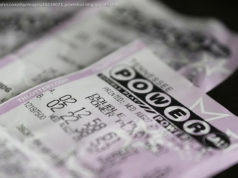The six-part romp leans hard into caricatures to sing of mortality and life’s absurdities.
The Coen brothers have used the Western genre as the basis for some of their finest films, like True Grit and No Country for Old Men. The bleak, broad landscape, in which beauty is often punctuated by intense brutality, is a good fit for their cockeyed storytelling sensibility that so often mixes comedy and despair. Within the conventions of the Western — and, sometimes, by subverting them — they’ve been able to tell some of their most resonant tales.
You could call The Ballad of Buster Scruggs the conclusion of the Coens’ Western trilogy, except it isn’t much like those two films stylistically. It’s a trope-heavy sextet — six short films strung together, with nothing obviously connecting them besides a kind of dream logic. Thematically, though, they’re connected by a sense of how absurd death can be, how unfair and irreverent and sometimes even funny it is.
So while a ballad usually tells a story, The Ballad of Buster Scruggs most closely resembles a very particular kind: a murder ballad. It’s not the tale of a single murder — more of a pile of them — but as its pieces accrue meaning, the culprits emerge: chance, human cruelty, and the unfeeling universe. In other words, it’s a Coen brothers movie.
If you’ve seen Joel and Ethan Coens’s 2009 film A Serious Man, you might remember that the main story is preceded by a short film based on a ( completely made up) Yiddish folk tale in which a dybbuk, or evil spirit, visits a Jewish couple living in a 19th-century shtetl. It’s only tangentially related to the story that follows, which has obvious connections to the Biblical story of Job. The folk tale doesn’t clearly have a point, and that is, well, the point: You’re meant to puzzle over its meaning, and maybe eventually derive your own.
If you puzzle long enough, though, you realize that the theme is the same as the overarching theme of A Serious Man: that bad stuff happens to good people, and when we try to explain it, we’re left just telling more stories about bad stuff happening to good people. The universe does not play favorites, and it rarely makes a lot of sense; the best any of us can do is to just keep plugging along.
The uncaring universe, one so capricious you have to laugh, is a long-running theme for the Coens, and The Ballad of Buster Scruggs picks it up again, this time in six shorts centered on various caricatures of the American West. The six stories are set up as having been collected in one old green hard-covered book, titled the same as the film, with illustrations from the upcoming story appearing between each segment.
The series begins with a (literal) bang, with Tim Blake Nelson playing the titular Scruggs, an outlaw nicknamed “The Misanthrope” who sings and yee-haws his way through a Western town, leaving laughter, singing, and carnage in his wake. Then there’s “Near Algodones,” in which James Franco plays an outlaw who robs a bank and gets punished for it in a fashion that gets dragged out so long it becomes comical.
In the third story, “Meal Ticket,” Liam Neeson is a grizzled and silent traveling impresario who features a legless, armless orator (Harry Melling) on his mobile stage in frontier towns every night. Tom Waits headlines the next section, “All Gold Canyons,” as a solitary prospector who hits the motherlode, while Zoe Kazan and Bill Heck star in “The Gal Who Got Rattled” as a pair of loners on the Oregon Trail who start to grow fond of each other.
The final section, “The Mortal Remains,” takes place nearly entirely inside a stagecoach, where a group of strangers (played by Tyne Daly, Brendan Gleeson, Saul Rubinek, Chelcie Ross, and Jonjo O’Neill) find themselves thrown together in a small-talk conversation about their past lives and shared destination that turns unexpectedly heated.
There are no repeated characters (at least, not noticeably), and the locations shift throughout the film from outback towns to prairies to mountain passages. Tonally, too, there’s some disparity between them. But by the time we reach “The Mortal Remains,” it makes sense that we’re in a stagecoach with a bunch of strangers at the end of a mysterious journey. That’s where we are, too.
Rumors initially flew that The Ballad of Buster Scruggs was meant to be an anthology series for Netflix, told in six episodes, and though the Coens say it was always meant to be a film, there are times when the movie does feel a little long. Sections like “Meal Ticket” and “The Gal Who Got Rattled” feel like cohesively told stories with a hint of humanity, while others, like “Near Algodones,” are a bit more random and brutal.
Because there’s no one arc through the whole runtime, the work of tracking with the piecemeal tale can get mentally exhausting after a while. (One wonders if breaking it into two “episodes,” or finding a thread of connection between them, might have helped willing travelers along the way.)
According to the Coens, these shorts are the products of a quarter-century of writing, with “The Ballad of Buster Scruggs” being the first (which places its origins between Barton Fink and The Hudsucker Proxy, if you’re curious). The rest were written over the past few decades and put aside, and the final section was written for the film.
None of the sections are predictable, and in all of them, somebody dies, though that’s not much of a spoiler since with writing this kooky and unpredictable there’s no telling what the end of the story will be from the beginning. That’s part of what calls A Serious Man’ s made-up Yiddish folk tale to mind — every segment of The Ballad of Buster Scruggs feels like a folk tale. And indeed, that is what ballads are: musical folk tales, handed down over generations.
Each story has the feeling of a yarn that was based in some reality but has grown and shifted and become more acutely caricatured as people retold it. And every caricature from stories of the old West is here: the cowboys, the pioneers, the meek little lady and the tall handsome stranger, the band of inscrutably yodeling “savages.”
Contemporary Westerns often rewrite the stories to make these caricatures into more realistic depictions of what the West was like. But for Buster Scruggs, the Coens lean in, turning every caricature even more cartoonish, lest we mistakenly think we’ve stumbled into real tales about real people.
All of those old stereotypes can feel jarring for a Western released in 2018 — and the Coens have been criticized in the past for using racially charged stereotypes, especially in movies like A Serious Man.






